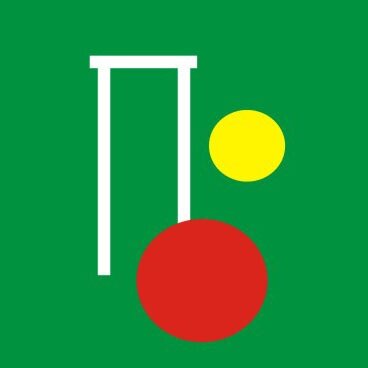After opening with the most popular post in Croquet Network history (10 Reasons Croquet is Better than Golf), the only logical follow-up is to take on the sport's greatest problem -- "interactivity." Rookies may as well move on, this is for the hardcore. If you don't know what I'm talking about, "you don't know what I'm talking about." (Please seek out your local club via your national association and take lessons immediately.)
Fundamentally, the interactivity problem strictly affects only the elite croquet players of the world. Every one else is pretty happy as things are. So why waste time proposing crazy solutions? In the ideal future, the sport grows from 65,000 players to 1,000,000. In that case, the problem becomes quite a bit more pronounced. Even growing to a level of 150,0000 or 200,000 would intensify the pressure.
Still, skeptics will say isn't that a bit like planning what to do win you win the lottery? Maybe, but there are now at least 27 national organizations out there trying to grow the sport. I say plan for success and in such case it's probably better to solve the problem in advance.
Enough chatter, let's get to the point. I make no guarantees that the proposals below don't have obvious flaws or aren't just plain silly. If you don't agree -- feel free to express your opinion with a comment, in the forum, on Facebook, Twitter ... anywhere works. Say it loud and say it proud.
LIGHTER, SMALLER BALLS WITH REDUCED HOOP WIDTH
Yes, this would make for smaller targets, meaning hit-ins would be more challenging, which contradicts the interactivity goal. However, smaller balls by nature should be more difficult to hit square and theoretically could result in more failed hoops. Add in the fact that the balls will be lighter and that gives the hoop a better advantage as well. We've seen through several slo-mo videos how the ball actually muscles through hoops. Plus, the smaller targets may increase misses on medium range roquets which could also disrupt breaks.
DOUBLE WICKETS AT FIVE AND SIX
Put another wicket six to eight feet toward the boundary for five and six and allow no bonus or deadness clearing after making the first of what is now considered a set of double wickets. Would a roquet count after making these non-bonus shot hoops? That would have to be determined after experimentation. If nothing else, the extra furniture on the court will annoy elite players.
JUMP HOOPS AT FIVE AND SIX
If you put a cross bar at roughly three inches, this essentially kills the peel game. If you want to keep peels, you could put the crossbar higher. Peels would be allowed through the "lower section," but a straight hoop shot would have to be a jump over the bar.
SPEED GAME -- ELIMINATE WICKETS FIVE AND SIX
The concept here is simple. If the game is over after the hit in (association) or the opening (U.S. rules), then shorten the game (and time limit) and play best of seven or best of nine. To shorten the game, remove wickets five and six. Each ball must score the four corner wickets and the stake.
WHITE BALL
There are unique considerations for U.S. rules and association on this one, but the principle function here is that once a wicket is cleared, the opponent is allowed to play one shot with the neutral white ball. For the first white ball shot, the striker may choose any of the four corner locations to shoot from. The purpose of this white ball is to give the opponent one shot to disrupt the break after each wicket is scored. The white ball would have unique rules in that it would not be allowed bonus strokes and it could not be roqueted for bonus strokes. For association, white ball play could start after first turns. For U.S. rules, white ball play should start at wicket #2.
A likely scenario is that game times would grow massively, so it may be best to limit the white ball option to wickets 5, 6, penult and rover.
U.S. CORNER BALL
This one only works for U.S. rules. If a player runs 4-back (or possibly 3-back?), the opponent is allowed to place any ball on the court in one of the four corner locations (only if the corner is completely open) at the start of his or her next turn. Each player is allowed to exercise this "corner ball" option once per game. The concept here is that after a player makes their break with the first ball, setting that un-hittable leave with a three-ball break laid out for partner should be a real challenge. The hope is that this would create a second "opening" in a game; however, I wonder if player one still has too much of an advantage because of the special powers of the rover ball.
Have fun with this one and we'll see you in two weeks -- MHD!
